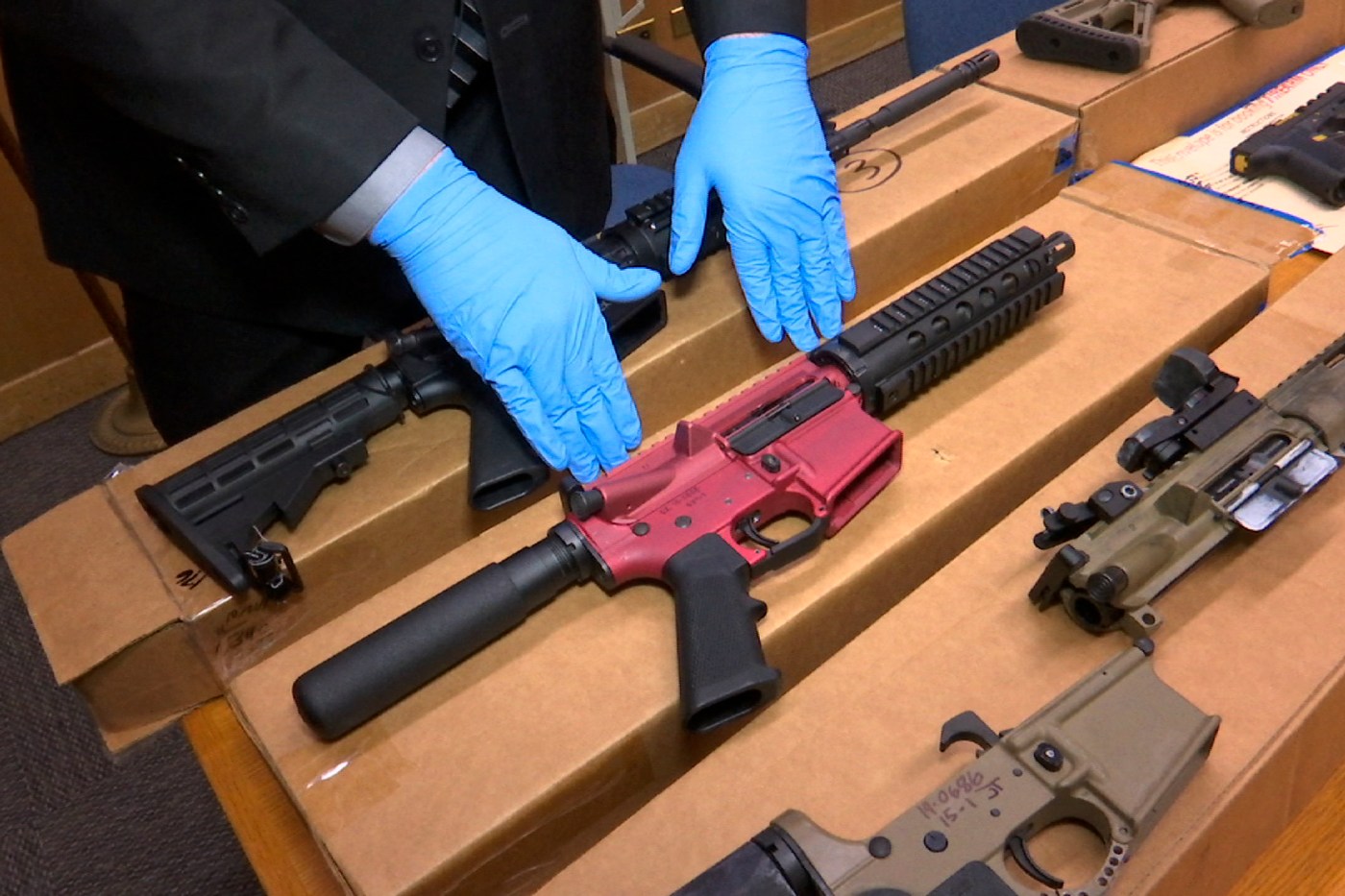
‘Ghost gun’ rule raises omelet question before Supreme Court
If the questions posed by the Supreme Court Justices reviewing a controversial gun case serve as any indication, it seems the judges are following along with the Biden administration’s reasoning for unilaterally curtailing the creation and carrying of so-called “ghost guns.”
The high court, on Tuesday, heard argument in the case of Garland v. VanDerStok, which comes after President Joe Biden’s Bureau of Alcohol, Tobacco, Firearms and Explosives declared that the separate pieces of a potential firearm, which are marketed as firearms parts, are themselves weapons which must be serialized and trackable.
“These weapon parts kits are designed and intended to be used as instruments of combat and they have no other conceivable use,” U.S. Solicitor General Elizabeth Prelogar said in response to a question from Associate Justice Samuel Alito.
Alito wanted to know if eggs, chopped ham, and sliced veggies placed next to one another on the kitchen counter constitute a western omelet. “No,” the Solicitor General said, since those parts can be made into something other than an omelet. Gun parts, she said, have no other function except to be used as the parts of a gun.
“Respondents themselves agree that a disassembled gun qualifies as a weapon,” Prelogar said.
Justice Amy Coney Barrett asked if Prelogar’s tune would change if she “ordered it from Hello Fresh, and you got a kit.”
“And it was like, turkey chili, but all of the ingredients are in the kit?” the Associate Justice asked.
That’s a better analogy, Prelogar said, since the kit indicates its parts are meant to be a chili.
“If you bought, you know, from Trader Joe’s some omelet-making kit that had all of the ingredients to make the omelet and maybe included whatever you would need to start the fire in order to cook the omelet and had all of that objective indication that that’s what’s being marketed and sold, we would recognize that for what it is,” Prelogar said.
At issue, other than the absurdity of the U.S. Supreme Court applying an “omelet test” as a legal standard for potentially deadly devices, is a Biden Administration rule which took effect in August of 2022.
According to that rule, “a frame or receiver, completed, assembled, or otherwise produced by a person other than a licensed manufacturer, and without a serial number placed by a licensed manufacturer at the time the firearm was produced,” is a “Privately Made Firearm” which, going forward, will require “marking, recordkeeping, and traceability.”
The Fifth Circuit Court of Appeals struck down parts of the ATF rule the following November, after a set of plaintiff gun owners and makers sued. The court determined that the federal agency had overstepped their congressional mandate.
“Where an executive agency engages in what is, for all intents and purposes, ‘law-making,’ the legislature is deprived of its primary function under our Constitution, and our citizens are robbed of their right to fair representation in government,” the Fifth Circuit wrote.
The Biden administration sued, saying regulating guns is exactly what ATF is supposed to do, and that they get to determine how much of a firearm is enough to require regulation.
The Second Amendment Foundation, which joined the case as an intervening plaintiff, said the ATF rule seeks to regulate “non-functional objects” which could, in theory and with considerable effort, eventually become a firearm.
The federal agency is attempting to change “the regulatory definition of the term ‘firearm’ to encompass precursor parts,” the Foundation wrote.
Homemade firearms, sometimes referred to as “ghost guns” have been popping up on law enforcement radars with much greater frequency in recent years, in large part due to the commercial availability of consumer grade 3D printers.
According to David Pucino, Legal Director and Deputy Chief Counsel of GIFFORDS Law Center, the Biden administration’s rule works to make the U.S. safer by acknowledging the reality that the firearms which people can now easily make at home are a legitimate concern.
“We know that ghost guns pose an enormous threat to public safety and have been used time and time again in crimes across the nation. Before ATF clarified that ghost gun products are guns, we saw an 1000% increase in ghost guns found at crime scenes. The clarifying rule is the accurate reflection of the law, and it is essential for public safety,” he said during a Tuesday afternoon press call.
Pete Patterson, arguing on behalf of the plaintiffs, told the justices that it is up to Congress to define what is and isn’t enough of a gun to constitute a firearm under the law, not the ATF alone. He said the court needs to stop this regulatory overreach.
“ATF has now exceeded its authority by operating outside the bounds set by Congress,” he said.
The high court will likely issue a decision in the case sometime next year.


